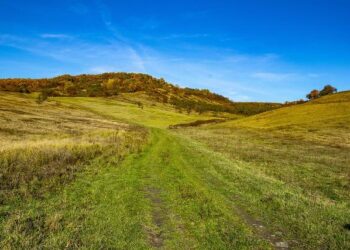ByCeleste Brash
Photographs ByJosh Humbert
Published January 28, 2024
This article was produced by National Geographic Traveller (UK).
Hot, sticky and aching from two hours of hiking steep jungle trails, it’s a relief to leap off the lava rock ledge and feel the massaging effect of the churning ocean as I enter the water below.
As I resurface, my hiking companions follow me in. Soon, there are five of us treading cool water, laughing from the adrenaline of the jump. Before long, we all scramble out onto the slick rocks and scale back up the 12ft, pock-marked cliff and repeat the leap.
I’m on a guided hike around Te Pari — the wild, uninhabited seven-mile-long coastline at Tahiti’s southeastern extremity. Te Pari simply means ‘The Cliffs’ in Tahitian, and from our vantage point its stark topography is laid out before us — a series of black, volcanic rock faces plunging vertically into the water, cut by a handful of lush, steep-sided valleys. Battered by wind and sea, the area is only accessible on foot or by boat when the swell is small enough, as it is today. When the ocean is more tempestuous, parts of the trail will be swallowed by legendary waves.
More than 250,000 international travellers make it to Tahiti each year. Most stay around the island capital of Pape’ete and its airport, before hopping over to French Polynesia’s popular island paradise of Bora Bora. The trickle of visitors who make it from Pape’ete to Tahiti Iti — the smaller part of this figure-of-eight-shaped island — tend to come for the surf at its southeastern corner.
Thanks to its fearsome reputation for 10ft-high barrelling waves, in July 2024, Teahupo’o will stage the summer Olympics’ four-day surf competition for France. A remote village where the paved road ends, it’s here that the Fenua Aihere (Bush Country) begins. Sparsely populated with a string of rustic fisher family homes set between the lagoon and mountains, it eventually leads to Te Pari. Though it’s only a 90-minute drive from Pape’ete to Teahupo’o, this area feels like another world.
After drying off with towels pulled from our backpacks, we continue our hike along the rising and falling folds of the cliff edge with our local guide, Hitinui Levy. Though he’s easily 6ft tall with a large build and is carrying a heavy canvas backpack, he springs along the rocky path like a sleek cat. Hitinui and some of his fellow guides from Teahupo’o maintain this trail themselves, and he knows it like the back of his hand.
Eventually the trail leads us uphill and into a pandanus forest, thick with the palm-like trees prized by Tahitians for their elongated leaves, which are used in weaving and to make local thatched roofs. Reaching a high clearing, we pause to watch a small aluminium boat bobbing in the deep sea on the horizon. We are just close enough to make out a plump man at the helm, grasping a fishing pole — a sight that makes Hitinui throw his arms up in the air. “This area is protected by the rahui, but no one polices it,” he explains.
Rahui is the traditional practice of temporarily banning fishing to replenish stocks, used by ancient Polynesians long before British and French naval expeditions and missionaries started to arrive in the late 18th century. The first Polynesians are believed to have reached Tahiti around 500 BCE. Archaeology in the area shows that Te Pari was densely inhabited until European diseases killed off approximately 80% of Tahiti’s population from the late 1700s to mid-1800s. Those who were left moved to villages such as Teahupo’o.
Hitinui tells us that Teahupo’o was the first area in French Polynesia to resurrect the rahui system after local fishers noticed their catches had declined over the years. Introduced in 2014, rahui now prohibits fishing across more than 670 hectares of little-visited and pristine lagoon and sea around Te Pari. While the government has authorised the ban, it doesn’t actively manage it. Our group watches as Hitinui takes matters into his own hands, his eyebrows furrowing as he cups his hands to his mouth to let out a long warning cry — “whoo!” — to catch the attention of the fisherman. It works, and seconds later we watch as he fires up his motor and putters away.
“Originally I wanted to be a park ranger to patrol the rahui,” says Hitinui, whose family have been the stewards of this area’s cultural and environmental heritage for generations. “But there’s no funding, so I became a hiking guide instead.” Now he’s the de-facto observer and enforcer, regularly diving this coastline alongside representatives from French Polynesia’s Direction of the Environment agency to check progress. Despite the lack of policing, he says there are markedly more and larger fish here now than there were a decade ago. The initiative is working so well that the community has no short-term plans to re-open fishing in the area; they fish on their village doorstep and leave this uninhabited area alone. Tautira and other small villages in the area have now started their own rahui and are seeing similar results.
When hiking here, it’s easy to see why locals are intent on protecting the region. Te Pari is a zone of immense natural beauty, with waterfalls that tumble into the sea and blue-black, jagged rock faces created by ancient volcanic eruptions, which we scale with the aid of ropes. The path wends through amber-hued reefs where we wade ankle-deep in clear waters, and over arcs of coarse white sand beaches. We swim in a natural, wave-fed swimming pool deep in a cave and fill our water bottles from a spring spewing from a 20ft fern-laden overhang.
Surf Country
The next day, I get to see a different side to the ocean at Havae Pass, a deep-water break in the barrier reef about 600 yards out from shore in the village lagoon. “That’s my brother,” says my boat companion and guide Cindy Otcenasek with pride, as we watch a young man shoot confidently towards us from the light blue peak of a wave.
Though our boat is bobbing in calm water, the reef break is so close that we can see the immense smile on the face of Cindy’s brother — Matahi Drollet, one of Teahupo’o’s home-grown professional surfers — as he banks his board over the back of the shoulder-high wave. A mist rises from the roll of water as it spreads away from us over the reef. These aren’t the giant waves the Olympic athletes will be hoping for, but with the emerald mountains in the foreground and a faint rainbow dusting a distant valley, the view is otherworldly.
The impact of the 2024 Olympics on Teahupo’o is considerable. There’s building work everywhere, with a waterfront park under construction along with a new bridge over the river mouth. The groundwork for an athlete’s village has been laid over what was once a taro field and planning permission has been granted to erect a 45ft-high aluminium judge’s tower on the reef. This last development has been the subject of widespread protests, because it will involve drilling into the reef. Locals believe the work could cause damage to its ecosystem as well as the reef structure itself, potentially affecting the formation of the village’s famed waves that the international surfers are coming to ride. The Paris 2024 committee says it wants to work with residents and surfers to improve the project.
“The World Surf League has been running surf contests here since the late 1990s,” Cindy tells us. “But we’ve never seen anything like this.” Villagers are excited about their home being on the world stage, but as they watch their backyard being transformed without — they claim — sufficient environmental studies, there are question marks over whether they will see any long-term positive impacts.
Once we’ve had our fill of watching the surfers, we motor back into the lagoon and along the sleepy Fenua Aihere coast. ‘Captain Cindy’, as she had introduced herself earlier, is taking me to her family’s land in the Fenua Aihere as part of her Taurumi Tour — the itinerary, which focuses on nature and the island’s traditional wellness culture, includes a taurumi (massage) that will be very welcome after yesterday’s hike. Dressed in a floor-length hibiscus-print dress, she cuts a striking figure at the helm of her motorboat.
Travelling with an assistant/masseuse and two couples visiting from France, it isn’t long before we reach a clearing surrounded by coconut palms and tropical flowers where the lagoon meets the mouth of the small and tranquil Vaipoiri River. We dine on Tahiti’s national dish, poisson cru — a slightly sweet salad, creamy from coconut milk, tangy from lime and featuring raw tuna that’s as tender as butter. As we eat, Cindy explains that Tahitians traditionally bathed in rivers like this one using local red ginger flowers as shampoo, and many still do today.
After lunch, Cindy and her assistant scour the clearing for snow-white gardenias, a gently sweet bloom that’s added to a range of other ingredients — fragrant wild basil, shredded coconut, and hot pink petals from the red ginger flowers — from which I’m tasked with picking my own blend to make a body scrub, piling everything into a hollowed-out coconut shell. We are then instructed to carry our organic mixture to the riverbank and add a small dollop of black sand, before mashing it together with a little coconut oil. Sitting in the shallow river, I lather my legs, arms and chest in the rough mixture until I feel like a newborn baby, with smooth, glowing skin.
But all of this is just preparation for the main event: a traditional Tahitian massage, characterised by strong hand pressure. Cindy uses gardenia-scented coconut oil as she pummels me underneath a canopy of coconut palms that flutter in a light breeze, waves lapping on the shore beside me as fruit doves and bulbuls call to each other in the trees.
With the scent of the tropics on my skin, I find myself at another black-sand river later that day after Cindy drops me back in Teahupo’o. About 10 kids are surfing the gentle waves at the river mouth, close to a handful of simple, pastel-coloured plywood houses with corrugated metal roofs that mark the boundary between Teahupo’o and the Fenua Aihere. It’s here that I meet Brandon Parker, guarding a fleet of bright orange kayaks for hire in front of his house. With views of the beach break peeping from between coconut palms, beach almond and sea grape trees, I’m struck by an irresistible urge to get out on the ocean.
And I’m by no means the first. “We had so many people stop to ask us where they could rent a boat, we decided to do it ourselves,” he says, laughing as he digs around to find me a paddle. Since it was announced that France would host the Olympic surfing competitions in Teahupo’o, Brandon says more travellers have been detouring off Tahiti’s main road to visit the village and catch a glimpse of the infamous waves that put it on the map.
I push my kayak out from the black sand beach over a little wave. After a dozen paddle strokes, I’m rewarded with views of the same mountains I saw from the surfing break earlier that day. Children’s laughter and the swooshing sound of waves hitting the beach fill my ears as the fading light bathes the landscape yellow. Yet another rainbow illuminates the sky, this time closer and brighter. A mist in the air tells me it might rain soon. Surf may be the big draw in Teahupo’o, but it’s the soul-cleansing natural beauty of the Fenua Aihere that makes it feel like a land apart. If the villagers have their say, it will stay that way.
Getting there and around
Air France runs daily flights from Heathrow, travelling via Los Angeles.
Average flight time: 25h
United Airlines has flights from Heathrow via San Francisco while Air Tahiti Nui and French Bee have cheaper two-stop flights via Paris and the US.
You’ll want to rent a car to explore Tahiti. Buses run infrequently, but offer a local experience.
When to go
Teahupo’o has its own micro-climate, with the calmest winds and daytime highs of 30C from December to April. June to October is big wave season, with lots of rain. In this period, daytime temperatures can drop to 20C.
Where to stay
Vanira Lodge, Teahupo’o. From €136 (£120), room only.
Pension Reva, Fenua Aihere. From €141 (£125), room only.
How to do it:
A 14-day tailormade trip with Audley Travel costs from £9,900 per person, based on two travelling, with three nights in Tahiti, three nights in Moorea and four nights in Bora Bora. The price includes all flights, ferry travel, B&B accommodation and transfers.
More info
Tahiti Tourism
Tahiti guide Hitinui Levy
Tahiti Surfari
Lonely Planet Tahiti & French Polynesia. £16.99
Breadfruit, Célestine Hitiura Vaite. £20.51
Published in the Jan/Feb 2024 issue of National Geographic Traveller (UK).
To subscribe to National Geographic Traveller (UK) magazine click here. (Available in select countries only).
>>> Read full article>>>
Copyright for syndicated content belongs to the linked Source : National Geographic – https://www.nationalgeographic.com/travel/article/hiking-surf-culture-island-life-southeast-tahiti






























